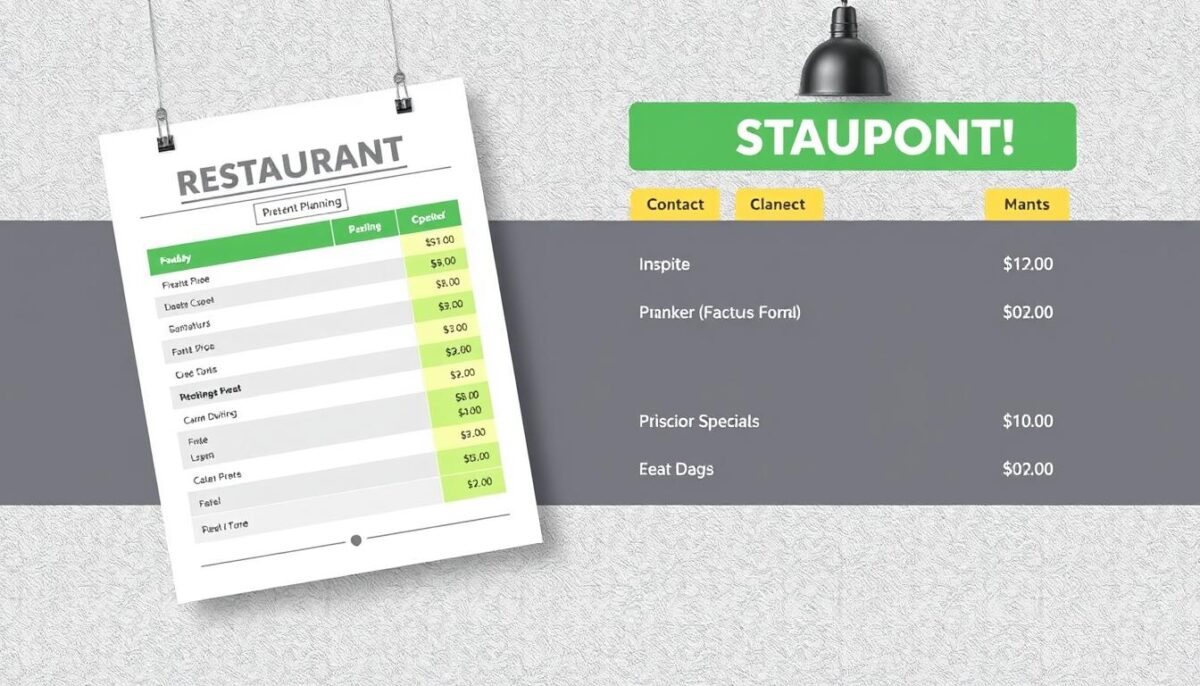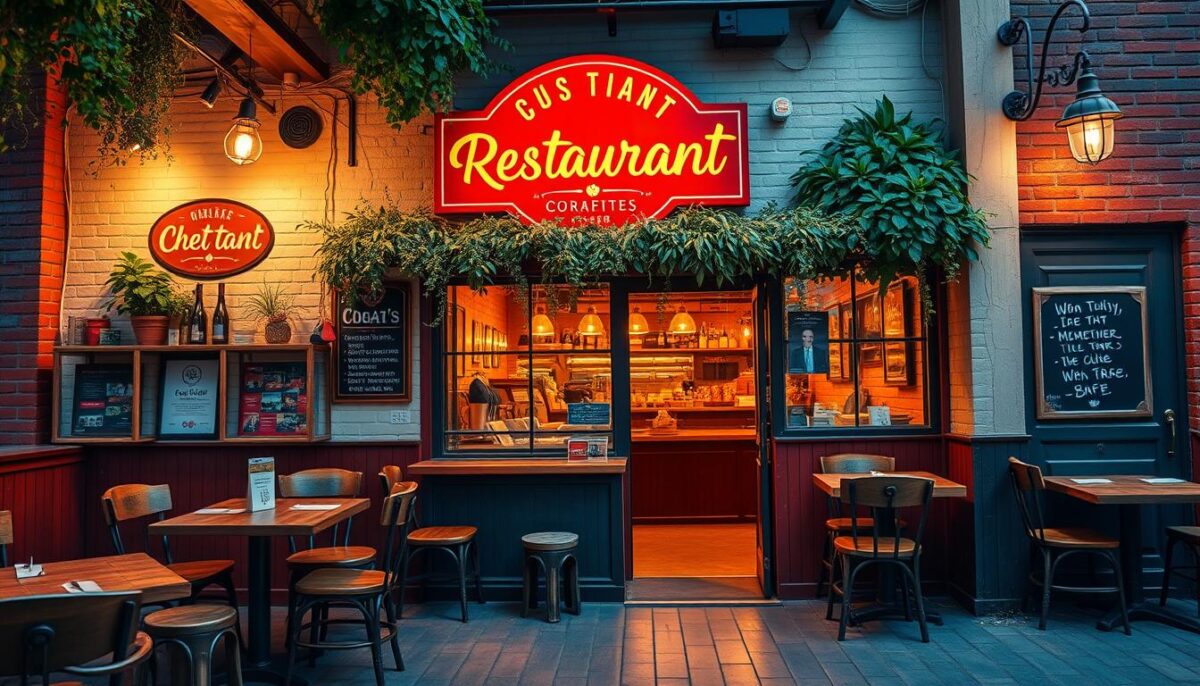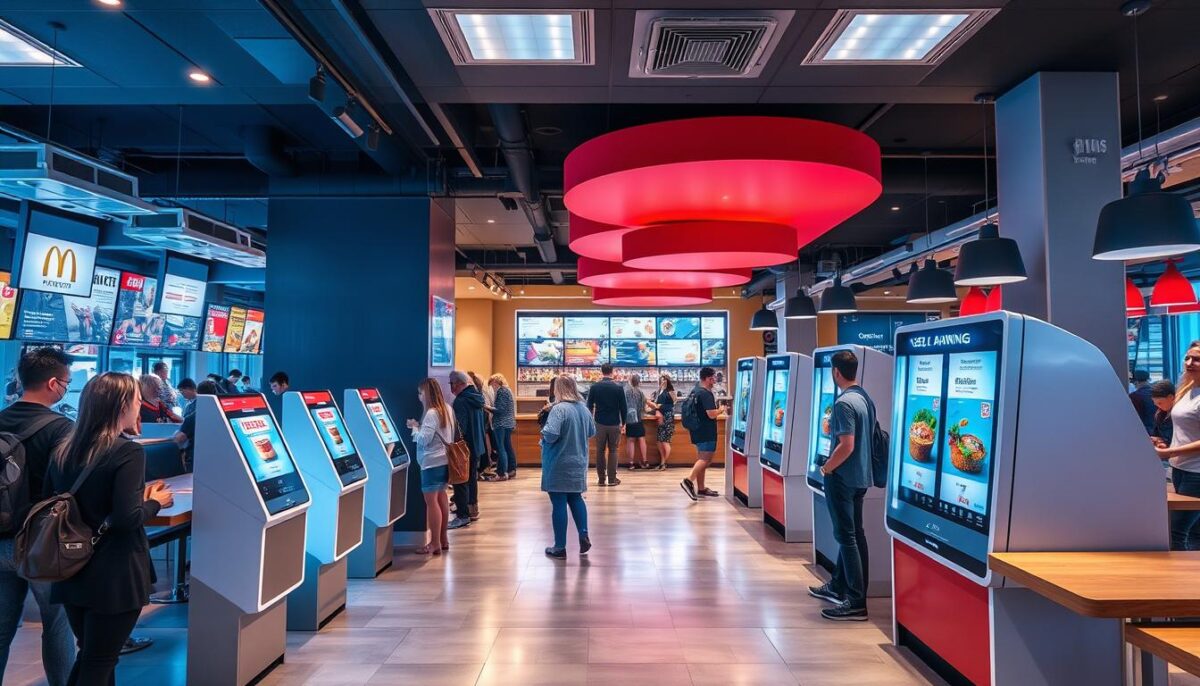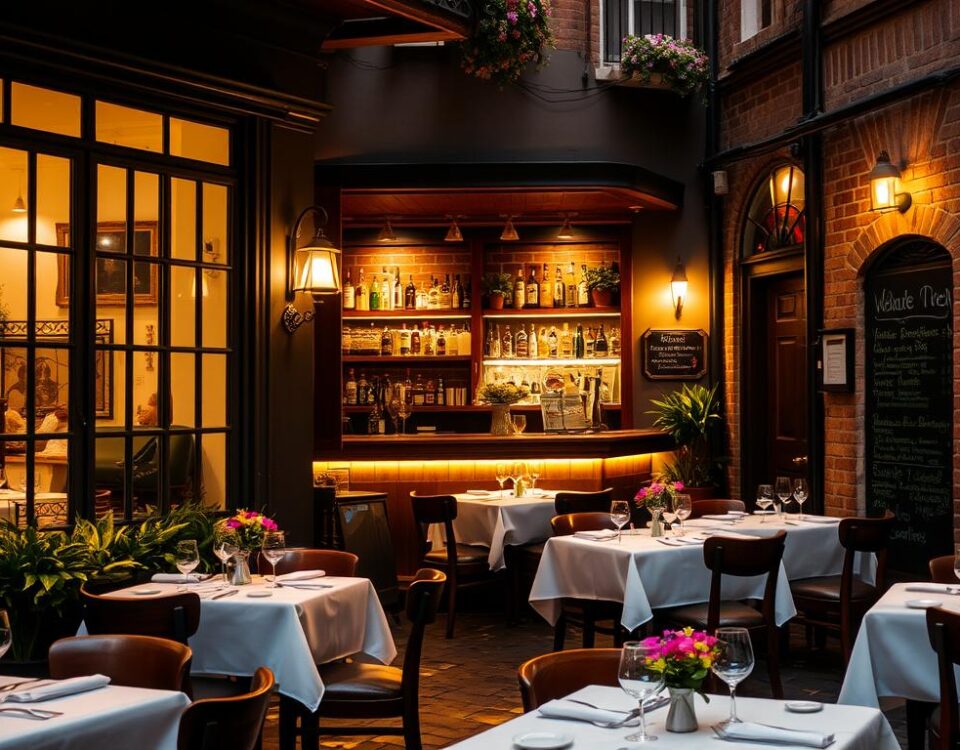
6 Supplier Red Flags Every Restaurant Owner Must Avoid
July 17, 2025
10 Best Wholesale Food Suppliers for Restaurants
July 18, 2025As a seasoned expert in the food industry, I’ve witnessed firsthand the struggles of independent restaurant owners trying to stay afloat amidst rising costs and stiff competition from big franchises. The harsh reality is that around 17% of restaurants close during their first year, according to the U.S. Bureau of Labor Statistics.
With wholesale food prices increasing by 1% every month since the beginning of 2021, it’s no wonder that restaurant owners are feeling the pinch. Labor, shipping, and safety/sanitation costs are also on the rise, making it challenging for business owners to maintain a healthy budget.
So, how can you compete with the big players without breaking the bank? By implementing effective budget strategies, you can maximize your limited resources and stay ahead of the competition.
Key Takeaways
- Effective budgeting can help level the playing field against big franchises.
- Rising costs in labor, food, and operations require strategic financial planning.
- Practical budget tips can transform your financial outlook without requiring franchise-level investment.
- A sustainable financial framework is crucial for long-term success.
- Maximizing limited resources is key to competing with bigger competitors.
The David vs. Goliath Reality of Restaurant Ownership
Competing against giant franchises is a daily challenge for independent restaurant owners, but there’s a way to level the playing field. As an expert who has helped numerous independent restaurants, I’ve seen firsthand how effective financial management can be the key to success.
Understanding the Financial Gap Between Independents and Franchises
The financial disparity between independent restaurants and franchises is significant. Franchises often have deeper pockets, backed by corporate funding and established brand recognition. In contrast, independent owners must be more strategic with their limited resources.
| Aspect | Independent Restaurants | Franchise Restaurants |
|---|---|---|
| Financial Resources | Limited, personal funding | Backed by corporate funding |
| Brand Recognition | Built from scratch | Established brand |
| Budgeting Approach | Flexible, personalized | Corporate guidelines |
Why Smart Budgeting Is Your Secret Weapon
Smart budgeting allows independent restaurants to maximize resources, maintain cash flow, and compete effectively. By treating your budget as a strategic tool, you can allocate resources to areas that generate the highest return on investment. Effective cash flow management through proper budgeting helps weather seasonal fluctuations and unexpected expenses. I’ve seen independent owners transform their financial outlook by adopting a strategic budgeting approach, making their limited resources go further.
Creating a Strategic Restaurant Budget Framework
A well-planned budget is the backbone of any successful restaurant business. It enables you to manage your finances effectively, ensuring that your operations are profitable and sustainable.

Choosing the Right Accounting Tools for Your Size
Selecting the appropriate accounting tools is crucial for managing your restaurant’s finances. The right tools can help streamline your financial processes, making it easier to track expenses and stay on top of your budget.
Identifying Your Fixed vs. Variable Costs
Understanding the difference between fixed and variable costs is essential for creating an effective budget. Fixed costs remain the same even if your restaurant’s sales fluctuate, while variable costs change in line with your sales volume.
Setting Realistic Financial Targets
Setting budget targets is like selecting key ingredients for your signature dish – it requires thoughtful consideration of quality, quantity, and the desired outcome. These targets are benchmarks against which you measure performance.
- Realistic financial targets should be both challenging and achievable.
- The most effective financial targets are specific, measurable, and time-bound.
- Your targets should account for seasonality and local events.
- I recommend setting both primary targets and stretch targets.
- Regularly reviewing your performance against these targets allows you to make timely adjustments.
By following these steps and creating a strategic restaurant budget framework, you can ensure that your business is well-equipped to manage its finances and achieve long-term success.
Essential Independent Restaurant Budget Tips to Maximize Resources
Creating a robust budget framework is essential for independent restaurants to navigate the competitive landscape. As an independent owner, having a flexible and well-planned budget can be the difference between thriving and merely surviving.

Implementing the Four-Wall Approach
The four-wall approach is a straightforward yet effective method to manage your restaurant’s finances. By focusing on the four walls of your establishment, you can better control costs and optimize revenue. This approach emphasizes the importance of understanding your restaurant’s physical and financial boundaries.
Tracking Every Expense with Purpose
Tracking expenses is crucial for maintaining a healthy budget and ensuring cash flow remains positive. By monitoring every expense, you can identify areas of inefficiency and make data-driven decisions to improve your bottom line. This involves regularly reviewing financial statements and being proactive about cost management.
Building Flexibility into Your Budget
Planning for unexpected events is vital in the restaurant industry, where unforeseen circumstances can arise at any moment. Building flexibility into your budget allows you to respond effectively to changes in the market or unexpected expenses. This can be achieved by creating multiple budget scenarios and maintaining a cash reserve to cover at least 2-3 months of operating expenses.
By incorporating these strategies into your budget planning, you can create a more resilient and adaptable financial framework that supports your restaurant’s long-term success.
Menu Engineering: Less Can Be More Profitable
Menu engineering is a powerful tool that can help independent restaurants thrive on a limited budget. By optimizing your menu, you can improve profitability without sacrificing quality or customer satisfaction.
Strategic Menu Simplification
Simplifying your menu can have a significant impact on your bottom line. By reducing the number of dishes, you can minimize inventory costs and make your kitchen operations more efficient. This, in turn, can lead to faster service and improved customer satisfaction.
Pricing Strategies That Protect Margins
Pricing your menu items correctly is crucial to maintaining healthy profit margins. It’s essential to consider food costs, competition, and target audience when setting prices. By using data to inform your pricing decisions, you can ensure that you’re maximizing revenue without deterring customers.
Reducing Food Waste Through Smart Planning
Food waste is a significant issue in many restaurants, with 4-10% of food purchases ending up in the trash. To combat this, implementing a “first in, first out” (FIFO) inventory system and training staff to properly rotate stock can help minimize spoilage. Additionally, creating secondary uses for ingredients, such as turning yesterday’s bread into croutons, can significantly reduce waste.
According to a recent report from Champions12.3, for every $1 invested in programs to reduce food waste, restaurant budgets save an average of $7 in operating costs. By implementing these strategies, independent restaurants can improve their profitability and competitiveness.
Staff Management on a Tight Budget
I’ve found that managing staff effectively is key to maximizing resources and driving business success. As an independent restaurant owner, it’s crucial to create a positive and productive work environment without breaking the bank.
To achieve this, let’s start by streamlining the hiring process. This not only saves time but also reduces costs associated with training new staff members.
Streamlining Your Hiring Process
By focusing on cultural fit and potential, rather than just experience, you can find employees who are more likely to stay and grow with your restaurant. This approach can significantly reduce turnover rates.
Training and Retention Tactics That Save Money
Investing in your staff through regular training and feedback can lead to significant long-term savings. By educating your team on menu items, customer service skills, and operational improvements, you can enhance their sense of ownership and engagement.
Creating a Team Culture Without Big Budgets
Building a strong team culture doesn’t require a large budget. Simple actions like pre-shift meetings, recognizing staff achievements, and involving employees in decision-making processes can foster a positive atmosphere. This approach not only boosts morale but also encourages employees to be more invested in the success of your business.
By implementing these strategies, independent restaurants can create a motivated and cohesive team, driving success without overspending.
Marketing Like the Big Chains Without Their Budgets

With the right approach, independent restaurants can market themselves as effectively as big chains, even on a limited budget. This involves leveraging local community connections, being savvy with social media, and turning customers into brand ambassadors.
Community-Based Marketing Strategies
Community-based marketing is about engaging with your local audience. This can include partnering with local businesses, hosting events, and participating in community activities. By doing so, you create a loyal customer base that feels connected to your restaurant.
Leveraging Social Media Without Breaking the Bank
Social media is a powerful tool for restaurants. Creating “Instagram-worthy” moments, engaging with customers online, and sharing behind-the-scenes content can all help to build a strong online presence without a hefty marketing budget.
Creating Brand Ambassadors From Your Customers
Turning customers into brand ambassadors is a cost-effective marketing strategy. This can be achieved by providing exceptional service, recognizing and rewarding loyal customers, and encouraging user-generated content. By exceeding customer expectations, you create a loyal following that will promote your restaurant.
Smart Technology Investments for Independent Restaurants
The right technology can help level the playing field for independent restaurants, making operations more streamlined and cost-effective. By adopting smart technology solutions, independent restaurants can enhance customer experience, reduce operational costs, and improve overall efficiency.

Self-Ordering Kiosks: Worth the Investment?
Self-ordering kiosks can significantly reduce labor costs by minimizing the need for front-end staff. They also enhance customer experience by reducing order errors and providing a seamless ordering process. I’ve seen independent restaurants reduce their labor costs by 15-20% after implementing self-ordering kiosks.
Budget-Friendly Reservation and POS Systems
Adopting budget-friendly reservation and POS systems can streamline your restaurant’s operations. These systems help manage reservations, process transactions efficiently, and track sales. By leveraging such technology, you can make data-driven decisions to optimize your menu and pricing strategies, ultimately reducing costs.
Using Technology to Reduce Labor Costs
Implementing technology such as automated inventory management systems, kitchen display systems (KDS), and scheduling software can significantly reduce labor costs. For instance, automated inventory management can save 5-10 hours of management time weekly. KDS streamlines communication between the front and back of the house, reducing errors and improving ticket times. You can explore more about streamlining your restaurant’s operations by visiting Delivisor’s Magic, which offers innovative solutions for independent restaurants.
Managing Prime Costs Like a Financial Expert
One of the most significant challenges independent restaurants face is managing prime costs effectively. Prime costs, which include food costs, labor costs, and other expenses, can make or break a restaurant’s profitability.
Keeping Food Costs Between 28-35% of Revenue
To maintain a healthy bottom line, it’s crucial to keep food costs in check. This can be achieved by implementing efficient inventory management systems and negotiating with suppliers to get the best prices. I always recommend maintaining a cash reserve to cover at least 2-3 months of operating expenses.
Controlling Labor Costs Without Sacrificing Service
Labor costs are another significant component of prime costs. To control these costs, restaurants can implement efficient scheduling systems and provide ongoing training to staff to improve productivity. By doing so, restaurants can maintain high-quality service without breaking the bank.
Planning for Unexpected Expenses
Unexpected expenses can arise at any time, and having a contingency plan in place is essential. Allocating 5-20% of the budget to a contingency fund can help protect the restaurant from financial strain. I advise creating a separate emergency fund for equipment repairs and replacements, and establishing relationships with multiple suppliers to ensure backup options.

Conclusion: Thriving, Not Just Surviving, on an Independent Budget
With the right financial strategies, independent restaurants can not only survive but thrive in a competitive market. Creating and maintaining a restaurant budget is crucial for achieving financial stability and long-term success in the restaurant business.
Throughout my career, I’ve seen that financial success isn’t about having the biggest budget—it’s about having the smartest approach to the budget you have. Independent restaurants that implement smart budgeting practices can deliver better food, service, and experiences than franchises, even with smaller financial resources.
By adopting these strategies, your independent restaurant can build a strong financial foundation, ensuring long-term success and the freedom to express its unique character and vision. Start implementing these strategies today to make your restaurant thrive.
FAQ
How can I effectively manage my restaurant’s cash flow?
To manage cash flow, I prioritize tracking every expense and maintaining a clear picture of my financial situation. I also make sure to have a plan in place for unexpected expenses, such as equipment repairs or slow sales periods.
What are some strategies for reducing labor costs without sacrificing service?
I focus on streamlining my hiring process, providing thorough training to my staff, and implementing retention tactics to minimize turnover. I also consider using technology, such as self-ordering kiosks, to reduce labor costs.
How can I optimize my menu to maximize profitability?
I simplify my menu to focus on high-margin items and use pricing strategies that protect my margins. I also regularly review my menu to identify opportunities to reduce food waste and improve profitability.
What are some budget-friendly marketing strategies for my restaurant?
I leverage social media to engage with my customers and promote my brand. I also focus on community-based marketing strategies, such as partnering with local suppliers, to build brand awareness without breaking the bank.
How can I use technology to improve my restaurant’s operations?
I consider investing in budget-friendly reservation and POS systems, as well as self-ordering kiosks, to streamline my operations and reduce labor costs. I also use technology to track my expenses and stay on top of my finances.
What are some key performance indicators (KPIs) I should track to measure my restaurant’s success?
I track key metrics such as food costs, labor costs, and sales to get a clear picture of my restaurant’s financial performance. I also monitor customer feedback and reviews to identify areas for improvement.



